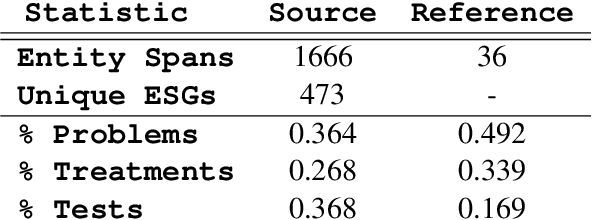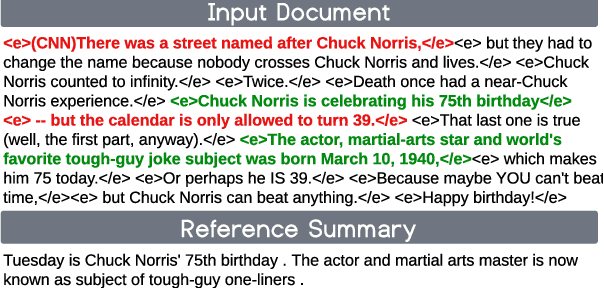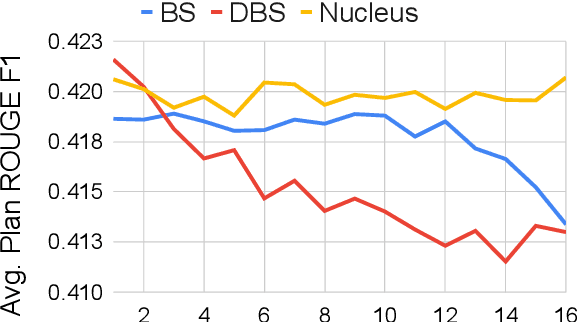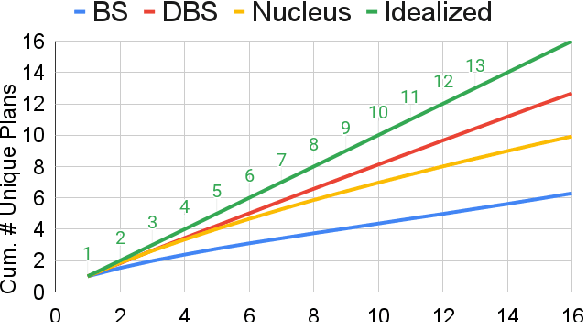Noémie Elhadad
ADHAM: Additive Deep Hazard Analysis Mixtures for Interpretable Survival Regression
Sep 08, 2025Abstract:Survival analysis is a fundamental tool for modeling time-to-event outcomes in healthcare. Recent advances have introduced flexible neural network approaches for improved predictive performance. However, most of these models do not provide interpretable insights into the association between exposures and the modeled outcomes, a critical requirement for decision-making in clinical practice. To address this limitation, we propose Additive Deep Hazard Analysis Mixtures (ADHAM), an interpretable additive survival model. ADHAM assumes a conditional latent structure that defines subgroups, each characterized by a combination of covariate-specific hazard functions. To select the number of subgroups, we introduce a post-training refinement that reduces the number of equivalent latent subgroups by merging similar groups. We perform comprehensive studies to demonstrate ADHAM's interpretability at the population, subgroup, and individual levels. Extensive experiments on real-world datasets show that ADHAM provides novel insights into the association between exposures and outcomes. Further, ADHAM remains on par with existing state-of-the-art survival baselines in terms of predictive performance, offering a scalable and interpretable approach to time-to-event prediction in healthcare.
CEHR-GPT: A Scalable Multi-Task Foundation Model for Electronic Health Records
Sep 03, 2025Abstract:Electronic Health Records (EHRs) provide a rich, longitudinal view of patient health and hold significant potential for advancing clinical decision support, risk prediction, and data-driven healthcare research. However, most artificial intelligence (AI) models for EHRs are designed for narrow, single-purpose tasks, limiting their generalizability and utility in real-world settings. Here, we present CEHR-GPT, a general-purpose foundation model for EHR data that unifies three essential capabilities - feature representation, zero-shot prediction, and synthetic data generation - within a single architecture. To support temporal reasoning over clinical sequences, \cehrgpt{} incorporates a novel time-token-based learning framework that explicitly encodes patients' dynamic timelines into the model structure. CEHR-GPT demonstrates strong performance across all three tasks and generalizes effectively to external datasets through vocabulary expansion and fine-tuning. Its versatility enables rapid model development, cohort discovery, and patient outcome forecasting without the need for task-specific retraining.
Incorporating Human Explanations for Robust Hate Speech Detection
Nov 09, 2024Abstract:Given the black-box nature and complexity of large transformer language models (LM), concerns about generalizability and robustness present ethical implications for domains such as hate speech (HS) detection. Using the content rich Social Bias Frames dataset, containing human-annotated stereotypes, intent, and targeted groups, we develop a three stage analysis to evaluate if LMs faithfully assess hate speech. First, we observe the need for modeling contextually grounded stereotype intents to capture implicit semantic meaning. Next, we design a new task, Stereotype Intent Entailment (SIE), which encourages a model to contextually understand stereotype presence. Finally, through ablation tests and user studies, we find a SIE objective improves content understanding, but challenges remain in modeling implicit intent.
Variational Shapley Network: A Probabilistic Approach to Self-Explaining Shapley values with Uncertainty Quantification
Feb 06, 2024Abstract:Shapley values have emerged as a foundational tool in machine learning (ML) for elucidating model decision-making processes. Despite their widespread adoption and unique ability to satisfy essential explainability axioms, computational challenges persist in their estimation when ($i$) evaluating a model over all possible subset of input feature combinations, ($ii$) estimating model marginals, and ($iii$) addressing variability in explanations. We introduce a novel, self-explaining method that simplifies the computation of Shapley values significantly, requiring only a single forward pass. Recognizing the deterministic treatment of Shapley values as a limitation, we explore incorporating a probabilistic framework to capture the inherent uncertainty in explanations. Unlike alternatives, our technique does not rely directly on the observed data space to estimate marginals; instead, it uses adaptable baseline values derived from a latent, feature-specific embedding space, generated by a novel masked neural network architecture. Evaluations on simulated and real datasets underscore our technique's robust predictive and explanatory performance.
CEHR-GPT: Generating Electronic Health Records with Chronological Patient Timelines
Feb 06, 2024



Abstract:Synthetic Electronic Health Records (EHR) have emerged as a pivotal tool in advancing healthcare applications and machine learning models, particularly for researchers without direct access to healthcare data. Although existing methods, like rule-based approaches and generative adversarial networks (GANs), generate synthetic data that resembles real-world EHR data, these methods often use a tabular format, disregarding temporal dependencies in patient histories and limiting data replication. Recently, there has been a growing interest in leveraging Generative Pre-trained Transformers (GPT) for EHR data. This enables applications like disease progression analysis, population estimation, counterfactual reasoning, and synthetic data generation. In this work, we focus on synthetic data generation and demonstrate the capability of training a GPT model using a particular patient representation derived from CEHR-BERT, enabling us to generate patient sequences that can be seamlessly converted to the Observational Medical Outcomes Partnership (OMOP) data format.
SPEER: Sentence-Level Planning of Long Clinical Summaries via Embedded Entity Retrieval
Jan 04, 2024



Abstract:Clinician must write a lengthy summary each time a patient is discharged from the hospital. This task is time-consuming due to the sheer number of unique clinical concepts covered in the admission. Identifying and covering salient entities is vital for the summary to be clinically useful. We fine-tune open-source LLMs (Mistral-7B-Instruct and Zephyr-7B-\b{eta}) on the task and find that they generate incomplete and unfaithful summaries. To increase entity coverage, we train a smaller, encoder-only model to predict salient entities, which are treated as content-plans to guide the LLM. To encourage the LLM to focus on specific mentions in the source notes, we propose SPEER: Sentence-level Planning via Embedded Entity Retrieval. Specifically, we mark each salient entity span with special "{{ }}" boundary tags and instruct the LLM to retrieve marked spans before generating each sentence. Sentence-level planning acts as a form of state tracking in that the model is explicitly recording the entities it uses. We fine-tune Mistral and Zephyr variants on a large-scale, diverse dataset of ~167k in-patient hospital admissions and evaluate on 3 datasets. SPEER shows gains in both coverage and faithfulness metrics over non-guided and guided baselines.
Maximum Likelihood Estimation of Flexible Survival Densities with Importance Sampling
Nov 03, 2023



Abstract:Survival analysis is a widely-used technique for analyzing time-to-event data in the presence of censoring. In recent years, numerous survival analysis methods have emerged which scale to large datasets and relax traditional assumptions such as proportional hazards. These models, while being performant, are very sensitive to model hyperparameters including: (1) number of bins and bin size for discrete models and (2) number of cluster assignments for mixture-based models. Each of these choices requires extensive tuning by practitioners to achieve optimal performance. In addition, we demonstrate in empirical studies that: (1) optimal bin size may drastically differ based on the metric of interest (e.g., concordance vs brier score), and (2) mixture models may suffer from mode collapse and numerical instability. We propose a survival analysis approach which eliminates the need to tune hyperparameters such as mixture assignments and bin sizes, reducing the burden on practitioners. We show that the proposed approach matches or outperforms baselines on several real-world datasets.
A Coreset-based, Tempered Variational Posterior for Accurate and Scalable Stochastic Gaussian Process Inference
Nov 02, 2023



Abstract:We present a novel stochastic variational Gaussian process ($\mathcal{GP}$) inference method, based on a posterior over a learnable set of weighted pseudo input-output points (coresets). Instead of a free-form variational family, the proposed coreset-based, variational tempered family for $\mathcal{GP}$s (CVTGP) is defined in terms of the $\mathcal{GP}$ prior and the data-likelihood; hence, accommodating the modeling inductive biases. We derive CVTGP's lower bound for the log-marginal likelihood via marginalization of the proposed posterior over latent $\mathcal{GP}$ coreset variables, and show it is amenable to stochastic optimization. CVTGP reduces the learnable parameter size to $\mathcal{O}(M)$, enjoys numerical stability, and maintains $\mathcal{O}(M^3)$ time- and $\mathcal{O}(M^2)$ space-complexity, by leveraging a coreset-based tempered posterior that, in turn, provides sparse and explainable representations of the data. Results on simulated and real-world regression problems with Gaussian observation noise validate that CVTGP provides better evidence lower-bound estimates and predictive root mean squared error than alternative stochastic $\mathcal{GP}$ inference methods.
From Sparse to Dense: GPT-4 Summarization with Chain of Density Prompting
Sep 08, 2023Abstract:Selecting the ``right'' amount of information to include in a summary is a difficult task. A good summary should be detailed and entity-centric without being overly dense and hard to follow. To better understand this tradeoff, we solicit increasingly dense GPT-4 summaries with what we refer to as a ``Chain of Density'' (CoD) prompt. Specifically, GPT-4 generates an initial entity-sparse summary before iteratively incorporating missing salient entities without increasing the length. Summaries generated by CoD are more abstractive, exhibit more fusion, and have less of a lead bias than GPT-4 summaries generated by a vanilla prompt. We conduct a human preference study on 100 CNN DailyMail articles and find that that humans prefer GPT-4 summaries that are more dense than those generated by a vanilla prompt and almost as dense as human written summaries. Qualitative analysis supports the notion that there exists a tradeoff between informativeness and readability. 500 annotated CoD summaries, as well as an extra 5,000 unannotated summaries, are freely available on HuggingFace (https://huggingface.co/datasets/griffin/chain_of_density).
Generating EDU Extracts for Plan-Guided Summary Re-Ranking
May 28, 2023



Abstract:Two-step approaches, in which summary candidates are generated-then-reranked to return a single summary, can improve ROUGE scores over the standard single-step approach. Yet, standard decoding methods (i.e., beam search, nucleus sampling, and diverse beam search) produce candidates with redundant, and often low quality, content. In this paper, we design a novel method to generate candidates for re-ranking that addresses these issues. We ground each candidate abstract on its own unique content plan and generate distinct plan-guided abstracts using a model's top beam. More concretely, a standard language model (a BART LM) auto-regressively generates elemental discourse unit (EDU) content plans with an extractive copy mechanism. The top K beams from the content plan generator are then used to guide a separate LM, which produces a single abstractive candidate for each distinct plan. We apply an existing re-ranker (BRIO) to abstractive candidates generated from our method, as well as baseline decoding methods. We show large relevance improvements over previously published methods on widely used single document news article corpora, with ROUGE-2 F1 gains of 0.88, 2.01, and 0.38 on CNN / Dailymail, NYT, and Xsum, respectively. A human evaluation on CNN / DM validates these results. Similarly, on 1k samples from CNN / DM, we show that prompting GPT-3 to follow EDU plans outperforms sampling-based methods by 1.05 ROUGE-2 F1 points. Code to generate and realize plans is available at https://github.com/griff4692/edu-sum.
 Add to Chrome
Add to Chrome Add to Firefox
Add to Firefox Add to Edge
Add to Edge